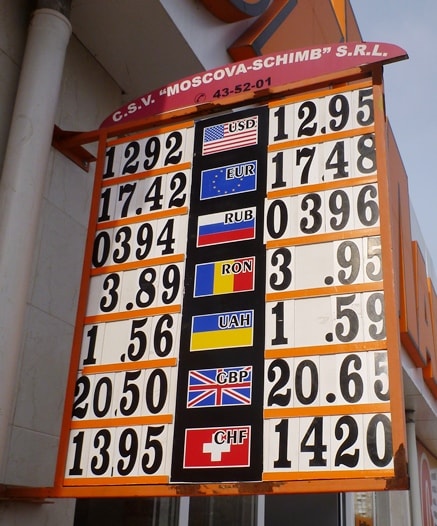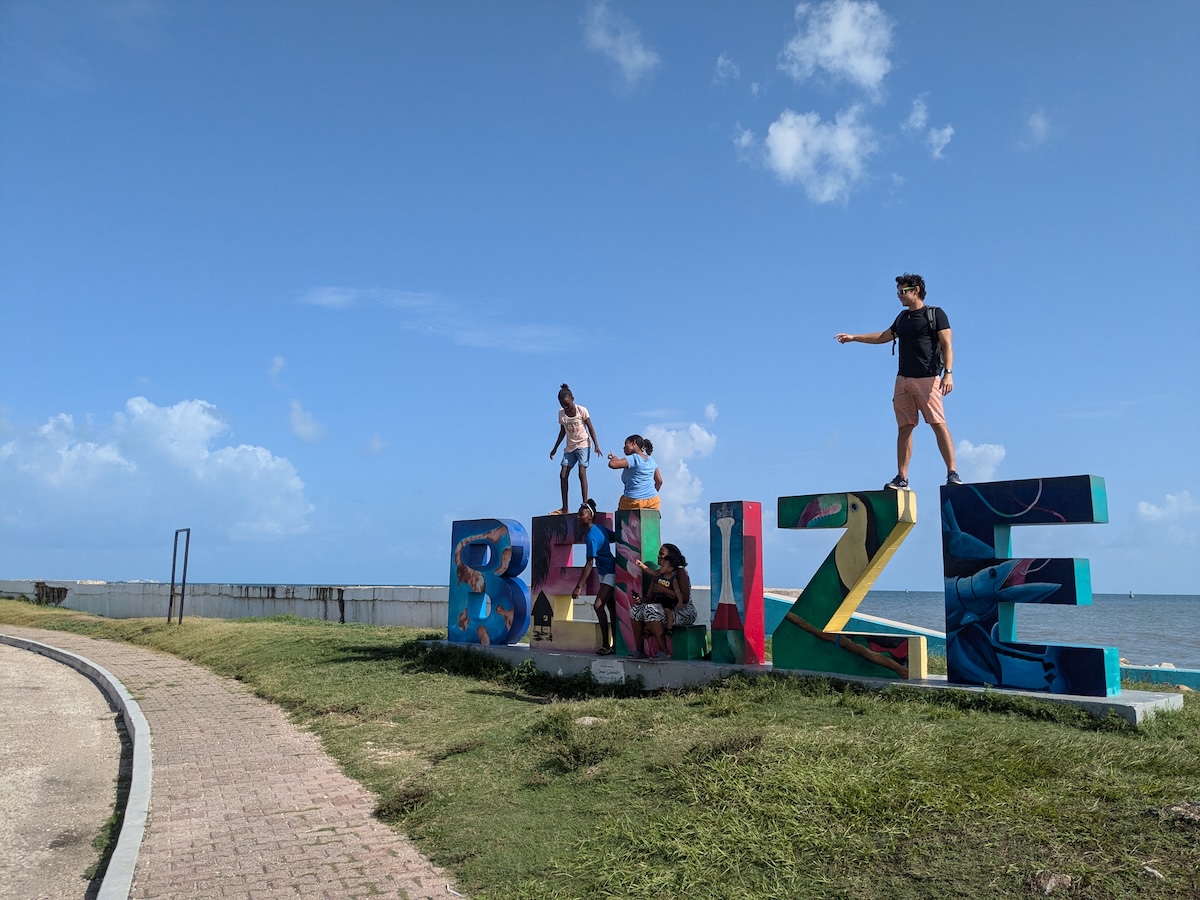There are many options to obtain money in the local currency of the country that you are going to be visiting. Although I have my personal preference, each of the options is appropriate for different situations.
Why is the way that I obtain foreign money important??
Every time that we change money from one country into the currency of another, we “lose” money from the conversion rate which is nothing more than profit from the vendors that are buying and selling currency for us. Our goal here is to minimize this “loss” of the conversion rate the most we can while at the same time obtaining local currency in a practical way. In other words, there is no use in getting a Traveler’s Check in US dollars with a great conversation rate if you are going to Bolivia and cannot change this check anywhere just as it is not helpful to obtain US dollars to go to US but with a bad conversion rate.
As I have already mentioned, I have a personal preference on how I get abroad that I will say later in the article, but here I explain all of the other options as well as their pros and cons.
If you are a Brazilian reading this, please read the Portuguese version, since it is made specifically for Brazilians, including information about IOF (Imposto sobre Operações Financeiras) and so on…
Change money in your home country before you travel
Pros:
- This is great if you are going to places where the government controls the exchange rate and causes there to be a strong black market exchange like in Venezuela or Argentina. In these countries, it is a great idea to arrive with American dollars in cash and then exchange them on the black market. Currently, the official rate for the American dollar is 5.83 Argentinian pesos. But you can try to change this exact same dollar on the black market and will receive around 8 pesos. That’s an increase of almost 40%. You can try to exchange this directly on the street, in a store, or in a restaurant (normally, they will ask you to buy something first).
- If buying before traveling, you have time to research the best exchange rates. An “honest” exchange should be, on average, a 2-3% difference between the buying and selling prices for main currencies like the US Dollar, the Euro, and Pounds. It should be between 5-6% for secondary currencies like the Australian Dollar and the Swiss Franc. For example, if the money exchange is selling the dollar at 2.30 (for Brazilian Real) but is buying at 2.13, a difference of 7.89%… this is too much!! You might be able to find smaller differences in the street, but check to make sure they don’t charge administrative fees and that it is a reputable exchange place. Or, in other words, that the money isn’t fake!! For you all to have an idea, here in Moldova where I am at the moment, there is less than 0.5% difference in buying and selling price of the American Dollar and the Euro on the streets, which is not bad at all;
- If you have have already exchanged your money before leaving the country, you do not need to be worried about finding a place to exchange money, having to exchange in a different language, or having to change in the airport.
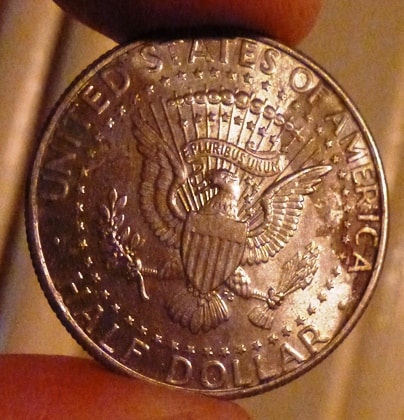 IMPORTANT TIP: Avoid changing money at currency exchanges at the airport!! Normally, they have the worst rates possible and normally charge administrative fees. They know that some travelers have just arrived in a country without any local money and therefore need to change money in the airport to pay for a taxi or other things. As there is usually only one currency exchange at the airport, they take advantage of the situation and charge as much as they like!! I’m in pain when I see, at my home airport in São Paulo, a person arriving from abroad and exchanging money at that “Safra” currency exchange. One time I asked for the exchange rate to buy Brazilian Reais with US Dollars and I almost didn’t believe them. I asked if they were joking… it was almost like legal robbery. Avoid currency exchanges at the airport like the plague!! Arrive at your hostel or at your accommodation and ask them if they know a currency exchange with good rates or simply search on a main avenue where there is lots of competition and therefore better rates.
IMPORTANT TIP: Avoid changing money at currency exchanges at the airport!! Normally, they have the worst rates possible and normally charge administrative fees. They know that some travelers have just arrived in a country without any local money and therefore need to change money in the airport to pay for a taxi or other things. As there is usually only one currency exchange at the airport, they take advantage of the situation and charge as much as they like!! I’m in pain when I see, at my home airport in São Paulo, a person arriving from abroad and exchanging money at that “Safra” currency exchange. One time I asked for the exchange rate to buy Brazilian Reais with US Dollars and I almost didn’t believe them. I asked if they were joking… it was almost like legal robbery. Avoid currency exchanges at the airport like the plague!! Arrive at your hostel or at your accommodation and ask them if they know a currency exchange with good rates or simply search on a main avenue where there is lots of competition and therefore better rates.
ATTENTION: There are a lot of fake Argentinian pesos. Learn how to verify their authenticity before changing them. In Venezuela, the difference between the official and black market rates is even more apparent. The official exchange rate is 6.29 Venezuelan Boliviarianos for each US dollar and on the black market it is around 40 Boliviarianos per dollar, a more than 500% increase that you don’t want to get ripped off on!!
So, it is always good to check before leaving if this same situation exists in the country that you are going to.
Cons:
- If you change too much money, you will return home with money that you cannot use and must change back into your currency again causing you to lose twice in exchanging;
- If you don’t change enough, you will need to go to another currency exchange later during your trip;
- If you go to a country that uses another currency, such as in Colombia where there is the Colombian peso, you lose 2 times in conversion if you are from a country that does not use Dollar or Euro. If you are from Sweden for instance, you lose when you change Swedish Krona for dollar and dollar to Colombian peso;
- If you are going on a long trip and are carrying a lot of cash, in the case of theft and the loss of your luggage or wallet, the damage will be greater.
- As I mentioned above, you can often find better exchange rates in the country you are going to once you arrive and there, therefore losing less money than exchanging before.
Change your money for Traveler’s Checks in your home country before traveling
Pros:
- As in the case above, you can research to see where you can buy them to get the best rates;
- They are safer than cash and you can be reimbursed if you lose them or they are stolen;
- They have no expiration date.
Cons:
- You will have to find establishments that accept Traveler’s Checks and, in many countries, this might be a nearly impossible mission;
- They can only be used by you because it needs your signature and documents when you use it. This also means that you cannot loan them to another person;
- You will also lose money with the conversion rate when you buy Traveler’s Checks;
- They don’t exist for all currencies.
If you would like to know more about Traveler’s Checks: https://www.americanexpress.com/us/content/prepaid/travelers-cheques.html
Prepaid cards in US Dollars, Euros, or Pounds
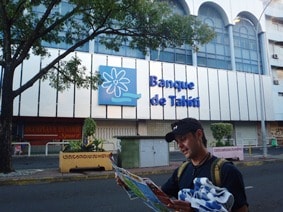 These are like bank cards but are pre-loaded with these currencies that you can use just like a regular debit card to make purchases or withdraw in local currency. The manager at my bank always tries to push this idea on me but he has not succeeded due to the following:
These are like bank cards but are pre-loaded with these currencies that you can use just like a regular debit card to make purchases or withdraw in local currency. The manager at my bank always tries to push this idea on me but he has not succeeded due to the following:
Pros:
- You leave from your home country with the card already “charged” with the money that you chose, either US Dollars, Euros, or Pounds and so you don’t have to worry about it upon arrival;
- The money you have on the card is protected in case of loss or theft since you need a PIN number to withdraw the money from it. Although, you will have to pay a few of around $20 USD to be issued a new card;
- If there is leftover money on the card at the end of the trip, you can decide to save it for your next or extract the balance in your local currency;
- It is convenient as it is used just as a debit card is and can make purchases or withdrawals in nearly any establishment or ATM that accepts cards.
Cons:
- You might lose some money in the conversion from your currency to another currency;
- If you are going to a country that doesn’t accept US Dollar, Euros, or Pounds you will lose money in converting a second time when they take the money inside it (dollars for example) and exchange for the local currency when you withdraw it;
- If you make a purchase with the card, you will not pay any fees, but if you need cash and will use an ATM, a fee of $ 2.50, € 2.50 or £ 1.70 will be charged (depending on the selected currency) each time you withdraw. This if the ATM itself does not charge you another fee on top of that amount! Each withdrawal becomes expensive….especially in poor countries where the card is not widely accepted in shops and you need to walk with cash. I’ve had a friend who had just this type of card and would only withdraw a lot to avoid paying this fee. Every time we changed countries, she had lots of money to exchange (and lose in the conversion again) or spend on things that were not needed;
If you would like to know more about pre-paid cards, here’s some more information: https://www.mastercard.us/prepaid-travel-card.html
International Credit Card
This is my favorite option if I am in places that I can use it and I can find cards that won’t charge international fees.
Pros:
- There are (usually) no start-up costs involved with getting a new card;
- It is really convenient. You don’t need to exchange money neither before nor during your trip. You don’t need to have money in your account at the moment of purchase. They are accepted in thousands of establishments around the world;
- You will actually pay off most of your purchases after the fact so you can leave your money invested and earning up until the payment date;
- With certain cards, you can accumulate points or miles and then later change them for flights or other “free” prizes;
- In general, the conversion rate used by banks the day you pay your balance is around 4-5% above the official rate. Pretty good compared to some other currency exchange places.
Cons:
- Depending on the card, you might get charged international fees which can really add up at the end of your trip.
- Depending on the country that you are traveling it, it can be difficult to find places that accept credit cards.
- Usually, you have to give your bank your specific travel plan with all the countries that you plan to travel to so they don’t put a hold on your account for safety reasons;
- Because you are not watching the money coming out from your account, it’s possible to lose control and spend more than you should;
- If you need cash, NEVER use your credit card to withdraw from ATMs. This withdrawal is considered a cash advance by your bank and you will be nailed with interest, fees, and an awful conversion rate that will traumatize you for the rest of your life!! Think I’m exaggerating??? Try it yourself and let me know how it goes.
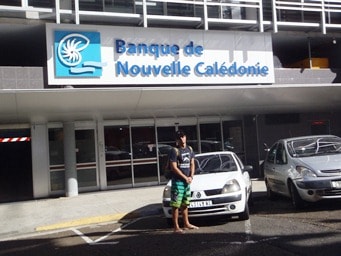
- TIP: If you read my page about how to get travel insurance, I mention that you can try to find international credit cards that will give you travel insurance for free, depending on where you are from. Sometimes, all they ask is that you buy the return flight ticket with that credit card and you get some kind of basic travel insurance. Read more in my page about how to find cheap flights.
International debit card from your bank
If you can’t find an international credit card that doesn’t charge international fees, I think this is the next best option. To use this option, you must first talk with your bank to find out what the conditions are for using your debit card abroad:
- If you can use your debit card abroad;
- If you will pay a fee to withdraw cash abroad. If you don’t, find out how many times you are allowed to withdraw abroad per month;
- Ask them to give you an example of their exchange rate to withdraw for that day, you can then compare this with the official rate and see how much you will “lose” in the conversion;
- Ask how much is your daily limit for withdrawals and purchases; it can be less than the balance in your account. With my card, for example, my limit is 300 USD per day… much less than what I normally need!!
Pros:
- You use it abroad just as you would at home except that you will be withdrawing in the local currency while still being debited in your own currency;
- There are (usually) no start-up costs involved with getting a new card;
- You don’t need to get specific currencies for each country. Your bank will automatically convert your purchases from the currency of the country you are in, into your own currency;
- You can use exactly what you need abroad and will not be left with too much or not enough foreign currency;
- Unlike credit cards which, in many countries, you might not be able to find places that will take them, you can find ATMs almost everywhere (although you should always be prepared with extra cash if you are going somewhere isolated that may not have access to ATMs);
- You can use almost any ATM around the world, regardless of which bank, if you have a Mastercard or a Visa;
- You can avoid withdraw fees from your bank by using the card for regular purchases;
- The difference between the official exchange rate and the one your bank charges is usually pretty good. The last time I calculated from my bank, I drew Dinars from Serbia and the exchange rate was only 4.8% larger than the official one. In other words, I was able to get local money in Serbia losing as little as possible in the conversion and without paying any fees for it….just can’t find better way to get local currency while traveling!!
Cons:
- If you travel without any of the local currency in cash, you can have problems when you arrive. In certain countries, immigration agents might ask you to show your credit card and/or a quantity of cash to prove that you can support yourself in the country and don’t plan to immigrate illegally (note: this happens more frequently when you are from Brazil than places like the US or Western Europe);
- If you need cash to pay for something when arriving in a country, you might not be able to find an ATM. One time, I arrived in Bali, Indonesia and I needed cash in the local currency to pay for a visa. Luckily, I was traveling with a friend and she lent me some. Another time, I arrived in Brunei by boat, without any cash, I needed to take bus and I couldn’t find any ATM. After much searching, I found a motorcyclist willing to give me a ride for free…but it’s not always good to not risk it;
- Just as with credit cards, you must tell you bank your specific travel plans and which countries you will be going to;
- In the majority of countries you can find ATMs that won’t charge you to withdraw but, in other countries, if you are using a foreign credit card you will always have to pay. From the top of my head I remember this being true for Argentina and Thailand. In the United States it can also be difficult to find ATMs that don’t charge;
- Using a debit card is also less secure than using a credit card because, in the case of theft, the thief will have access to your whole account balance.
Some final tips:
- Withdraw money immediately after arriving in the airport (if the ATM doesn’t charge fees) so you don’t have to worry;
- If you will be charged to withdraw, try withdrawing the most that you can at a single time as well as with a “broken number,” such as 320, so you will receive smaller bills as it can be hard to exchange big bills for public transportation and other purchases;
- To verify the official exchange rate, type “currency converter” into Google and it will open a rectangular that will let you
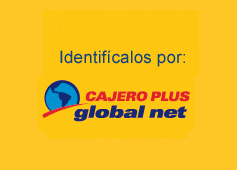 put in the currencies you want to compare. Write down the exchange rate on a piece of paper and leave it in your wallet so when you withdraw, you will know how much you are withdrawing as ATMS often just list the amounts in the local currency and 100.000 can be like 3 dollars;
put in the currencies you want to compare. Write down the exchange rate on a piece of paper and leave it in your wallet so when you withdraw, you will know how much you are withdrawing as ATMS often just list the amounts in the local currency and 100.000 can be like 3 dollars; - Avoid independent ATMs or, in other words, ones that are not from a bank. These will charge you the largest withdrawal fees. A good example is Global Net in Peru, which was charging me $4 each time I withdrew, which was absurd!! Try to avoid these costs, they are very unfair!! Instead, walk a bit more and you can find an ATM like Scotiabank that won’t charge you anything.
Conclusion
At the end of the day, the ideal is to use a bit of all of the above to be prepared for anything. I mainly use credit card, walk with 50 USD in my wallet for emergencies, and carry my debit card in case I need local currency (particularly in less developed countries). This way, I will be ready for whatever happens…
The best way to transfer and receive money abroad
I know this might seem a bit off topic, but it is related to traveling and the need to send or receive money from other countries.
Sometimes, it can be cheaper for travelers to send money to parents and friends in countries they are planning to visit. Then, they can get that money back in the local currency once they arrive in those countries.
For example, let’s say I’m in the United States and I’m planning to travel to France where my brother is at right now. I use one of the 3 companies below to send money to my brother in France. He will receive this money in Euros and then give to me once I arrive there. This way I don’t need to exchange money before in the US or after when I arrive in France.
Obviously, this a great way to send or receive money from family or friends abroad, even if you are not traveling yourself.
These are the 3 best and cheapest companies to send and receive money abroad
Wise (formerly Transferwise) 
From the same creators of Skype, Wise is probably the cheapest way to send and receive money from other countries. And if you use this link here, you can make a transfer of up to $600, completely free of charge.
You can join Xe for free to simulate how much you could save with your transfer.
Paypal (depending on your local bank)
P.S.: As I mentioned on my page about how to pack your bags, don’t forget a good money belt to carry your cash. You can find them at Amazon here, eBay here or REI here.
And what about you?? Does anyone have any other advice or tips about how they deal with money when abroad?? Have you ever been in a country where none of the options above works?? Leave your stories in comments below and let me know if anything was unclear in the text and I will try to help you as much as I can.
Happy travels!!

